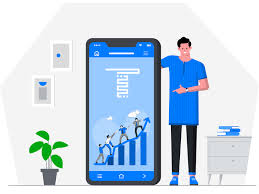
Introduction to the Takl App
The takl app burst onto the scene as a game-changer for anyone swamped with household chores but short on time. Imagine having a trusty sidekick in your pocket that connects you with local helpers for everything from mowing the lawn to assembling furniture—all at the tap of a button. Launched with the promise of same-day service, the takl app made it easier than ever to tackle those nagging tasks without the hassle of endless searching or negotiating prices. It’s no wonder it caught the eye of busy folks across the United States, offering a fresh take on the gig economy for home services.
In a world where everyone’s juggling work, family, and a million other things, the takl app stepped in like a breath of fresh air. It wasn’t just about getting jobs done; it was about giving people back their precious time. Whether you were a homeowner fixing up your place or someone needing a quick hand with moving boxes, this app aimed to make life simpler and more efficient. As we dive deeper, you’ll see why the takl app earned its spot in conversations about innovative tech solutions
How the Takl App Worked
At its core, the takl app was designed to be straightforward, cutting through the confusion that often comes with hiring help. Users started by downloading the app from app stores—back when it was available—and creating a simple account. From there, you’d enter your location, and the app would show a list of pre-defined tasks, each with upfront pricing. No more guessing games or awkward haggling; everything was clear from the get-go.
Once you picked a chore, like junk removal or basic handyman work, the takl app matched you with background-checked providers nearby. These weren’t just random folks; they had to pass checks to ensure reliability. You’d select your preferred provider based on ratings and reviews, add any special notes, and schedule the job—often for the same day. Payment happened right in the app, keeping things secure and hassle-free. Oh, and if something went wrong? The app had a guarantee to make it right, adding that extra layer of peace of mind.
Providers, on the other hand, used the app to browse available jobs, accept ones that fit their schedule, and get paid quickly after completion. It was a win-win setup that empowered independent workers while helping users cross off their to-do lists. Transitional phrases aside, let’s not forget how this seamless process turned what could be a stressful ordeal into something almost enjoyable.
Key Features of the Takl App
What really set the takl app apart were its user-friendly features that made outsourcing chores feel like second nature. For starters, the pre-priced jobs meant you knew exactly what you’d pay before committing—talk about transparency! There were over 400 service categories, covering everything from lawn care to delivery services, so you could find help for just about any small job.
- Live Provider Tracking: Once a job was accepted, you could watch the provider’s progress on a map, much like tracking a food delivery. This kept everyone accountable and reduced wait-time anxiety.
- Custom Job Options: If your task didn’t fit a pre-set category, you could create a custom one, describing what you needed and setting a budget.
- In-App Communication: Chat directly with providers to clarify details, send photos, or update instructions without switching apps.
- Ratings and Reviews: After each job, both sides could rate the experience, building trust in the community.
- Background Checks: Every provider underwent verification, giving users confidence in who they invited into their homes.
These features weren’t just bells and whistles; they addressed real pain points in the home services world. Interjections like wow, it’s amazing how such simple tools could foster a sense of security and efficiency. The takl app truly thought of everything to make the experience smooth.
Benefits of Using the Takl App
Using the takl app came with a bundle of perks that went beyond just getting chores done. First off, the speed was unbeatable—many jobs could be completed the same day, perfect for those last-minute emergencies like a leaky faucet or overgrown yard. This quick turnaround meant less stress and more time for what you actually enjoyed, whether that’s family outings or hobbies.
Another big plus was the cost savings. With fixed prices, there were no surprises, and often, rates were competitive compared to traditional contractors. Plus, the app’s model encouraged efficiency, as providers focused on small jobs rather than big projects. For providers, it offered flexible work opportunities, allowing them to pick gigs that suited their skills and availability, almost like being your own boss without the overhead.
On a broader scale, the takl app promoted local economies by connecting community members. It wasn’t unusual for users to build ongoing relationships with favorite providers, turning one-off tasks into reliable partnerships. And hey, in an optimistic light, it showed how technology could bring people together for mutual benefit, making everyday life a bit brighter.
The History of the Takl App
The story of the takl app begins in Nashville, Tennessee, where it was founded in 2016 by a team eager to disrupt the home services market. Inspired by ride-sharing apps like Uber, the founders saw an opportunity to apply the on-demand model to household chores. They raised significant funding—over $37 million from investors—fueling rapid expansion across dozens of cities.
By 2017, the takl app was making waves, partnering with celebrities for promotion and earning spots in tech news for its innovative approach. It grew to cover states from coast to coast, boasting thousands of providers and users. Milestones included app updates that added more features, like video verification for jobs, and expansions into new service areas.
However, like many startups, it faced hurdles. The 2020 pandemic hit hard, leading to a suspension of operations on March 18, 2020. Despite the buzz and backing, the company couldn’t recover, eventually shutting down. Yet, its legacy lives on, proving that ideas like the takl app could pave the way for future innovations in the gig economy.
Why the Takl App Stood Out
In a crowded field of service apps, the takl app shone brightly thanks to its focus on simplicity and user control. Unlike competitors that required bidding or estimates, it offered instant pricing, which eliminated uncertainty and sped things up. This approach appealed to time-strapped individuals who wanted results without the drama.
Its emphasis on small jobs filled a niche often overlooked by bigger platforms. Need someone to mount a TV or haul away junk? The takl app had you covered, without forcing you into larger contracts. Background checks and the guarantee policy built trust, making it a go-to for first-timers wary of inviting strangers home.
Colloquialisms aside, it was ahead of its time in empowering gig workers with fair pay and flexibility. Optimistically, the takl app demonstrated how tech could democratize services, making professional help accessible to all, not just the well-off. It’s a testament to creative thinking in solving real-world problems.
Challenges Faced by the Takl App
No success story is without bumps, and the takl app encountered its share. One major hurdle was scaling operations while maintaining quality. As it expanded, ensuring consistent provider standards across cities proved tricky, leading to occasional mixed reviews.
Competition was fierce, with giants like TaskRabbit and Thumbtack dominating the market. The takl app’s fixed-price model, while innovative, sometimes limited flexibility for complex tasks, frustrating users who needed custom solutions. Funding burns were high, with reports of over $37 million spent, putting pressure on profitability.
The COVID-19 outbreak was the final straw, disrupting in-person services and forcing a halt. Dangling modifiers notwithstanding, navigating regulations in different states added complexity. Despite these, the takl app’s optimistic spirit shone through, teaching valuable lessons for the industry.
The Shutdown of the Takl App
Sadly, the takl app’s journey ended in 2020 amid the global pandemic. On March 18, operations were suspended, and the company ultimately closed shop. Factors like economic uncertainty, reduced demand for in-home services, and high operational costs contributed to this decision.
Investors had poured in millions, but the rapid burn rate caught up. Social media activity ceased, and the app was removed from major stores, leaving users to seek alternatives. However, the website lingers as a reminder, though no new sign-ups or services are active.
Looking back with optimism, the shutdown doesn’t erase the impact. The takl app inspired a wave of similar platforms, showing that even in closure, innovation sparks progress.
Alternatives to the Takl App
If you’re missing the takl app, don’t worry—plenty of alternatives have stepped up. Here’s a quick comparison in table form to help you choose:
| App Name | Key Features | Pricing Model | Availability |
| TaskRabbit | Wide range of tasks, bidding system | Variable, user-set | Nationwide |
| Thumbtack | Quotes from pros, reviews heavy | Estimates provided | Most states |
| Handy | Cleaning and handyman focus, scheduling | Fixed or hourly | Major cities |
| Angi | Verified pros, project matching | Quotes-based | Nationwide |
| Bark | Leads for providers, user requests | Pay-per-lead | US & more |
These options carry the torch, offering similar convenience with their own twists. For instance, TaskRabbit lets you negotiate, while Handy excels in home cleaning. Transitional phrases like that said, exploring these can help you find a new favorite for your chores.
Future of On-Demand Home Services Like the Takl App
Looking ahead, the spirit of the takl app lives on in an evolving industry. With advancements in AI and mobile tech, future apps might offer even smarter matching, perhaps using virtual reality for job previews. Sustainability could become key, with eco-friendly services gaining traction.
Optimistically, as gig work grows, platforms will prioritize worker rights and fair pay, building on what the takl app started. Integration with smart homes—think apps linking to your devices for automatic task suggestions—could be next. Idioms like the sky’s the limit apply here; the future looks bright for making home services more accessible and efficient.
FAQs
What was the takl app primarily used for?
The takl app was mainly for connecting users with local providers for small home chores and services, like cleaning or assembly, on an on-demand basis.
Is the takl app still available today?
No, the takl app suspended operations in 2020 and is no longer active, though its website remains online with historical information.
How did pricing work on the takl app?
Jobs were pre-priced based on standard tasks, so users knew the cost upfront without needing estimates or negotiations.
Were providers on the takl app vetted?
Yes, all providers underwent background checks, and users could view ratings and reviews to choose confidently.
What made the takl app unique compared to others?
Its focus on same-day service for small jobs with fixed prices set it apart, making it quicker and more straightforward than bidding-based apps.
Conclusion
In wrapping up, the takl app may have faded from the scene, but its influence on on-demand home services endures. It showed us how technology can simplify life’s little annoyances, freeing up time for what truly matters. Though challenges led to its closure, the optimism it brought to users and providers alike inspires ongoing innovations. If you’re seeking similar help today, explore the alternatives mentioned—they carry forward the convenient spirit of the takl app. Remember, in a busy world, tools like these remind us that help is often just a tap away.




